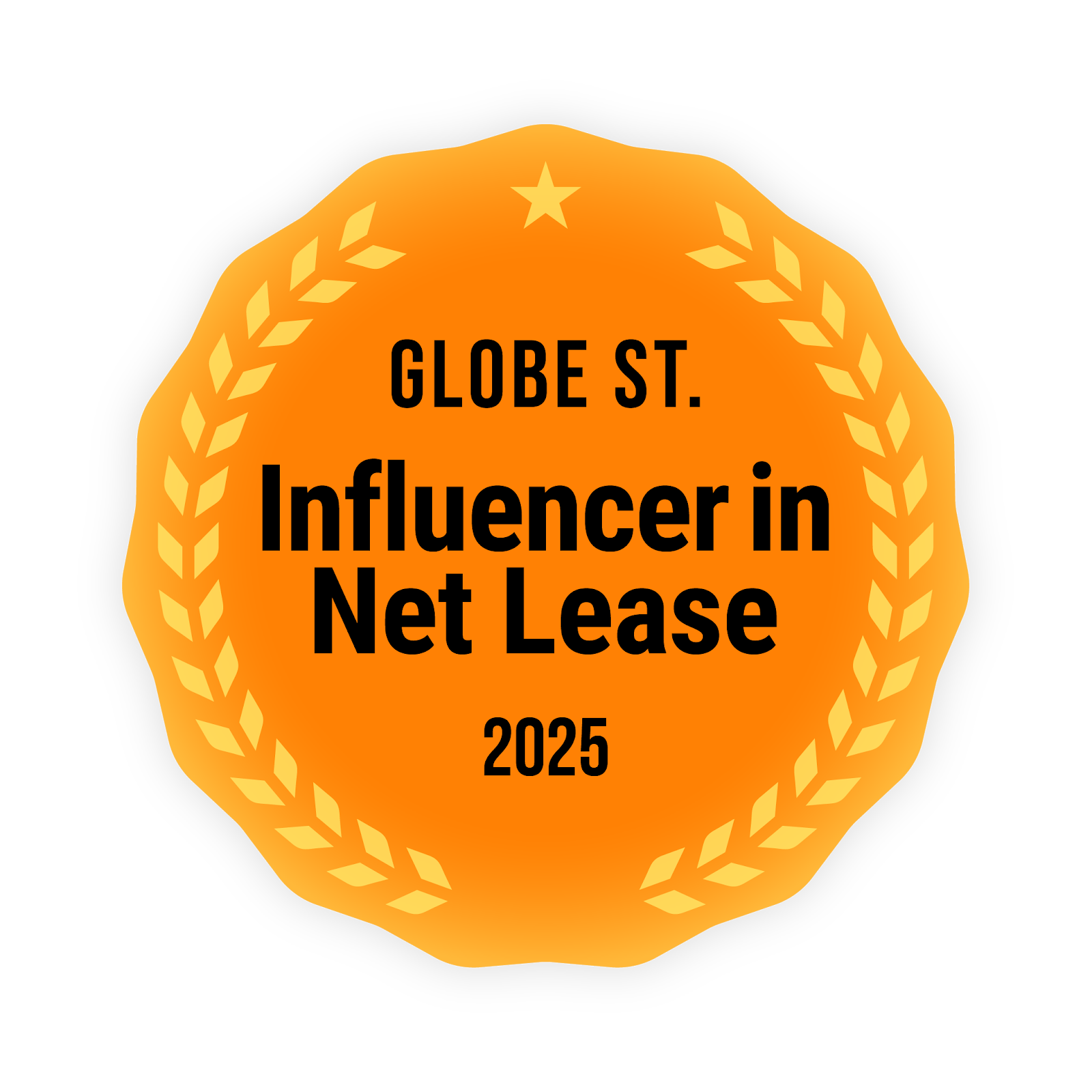The financing landscape for net lease investments has shifted significantly in 2025 as high interest rates continue to shape borrowing conditions. Investors seeking to acquire or refinance net lease properties must navigate elevated loan rates, lender scrutiny, and changing market dynamics. However, opportunities remain for well-capitalized buyers who understand how to structure deals effectively.
Selecting the right property types, tenants, and financing sources is essential for obtaining favorable loan terms. This article explores current loan rates, which property types and tenants qualify for the best financing, where to find competitive lending options, and how cap rates impact financing decisions.
Loan rates remain high in 2025
The financing environment for net lease investments in early 2025 remains challenging, as elevated borrowing costs continue to weigh on transaction volume. According to Northmarq, total single-tenant net lease sales in Q1 2025 fell to $9.4 billion, representing a 30% decline from Q4 2024, one of the weakest starts to a year in recent memory. The pullback in activity reflects investor caution amid tighter lending conditions and broader market uncertainty.
Commercial mortgage rates remain elevated in early 2025, reflecting broader economic conditions and Federal Reserve policy. According to CommLoan, as of May 03, 2025, commercial bank rates average 5.94%. These rates have increase slightly over the past few months, though borrowers with strong credit and property fundamentals may secure slightly better terms.
Select Commercial reports that as of May 05, 2025, NNN Single Tenant commercial mortgage rates currently start at 6.23% at LTVs up to 75%, with the 5-year Treasury yield at 3.94% and the 10-year Treasury yield at 4.34%. This suggests lenders are pricing in expectations of potential Federal Reserve rate cuts later in 2025, but borrowing costs remain significantly higher than pre-2022 levels.
Despite headwinds, private investors continue to lead the sector, comprising 46% of all net lease buyers. However, institutional capital has become more active, now representing 27% of buyers, particularly in the industrial net lease segment, where long-term tenant stability and rising demand for distribution assets improve underwriting conditions
For borrowers, these dynamics mean access to financing remains strongest for properties with creditworthy tenants, long lease durations, and essential service use cases. Lenders remain selective and focused on cash flow reliability, with pricing and structure highly sensitive to tenant quality and location.
Cap rate trends and their impact on financing
Meanwhile, cap rates continue to recalibrate in response to these financing pressures. Cap rates are critical in determining whether a net lease investment is financeable under current market conditions. According to The Boulder Group, single-tenant net lease cap rates increased for the twelfth consecutive quarter in Q1 2025, reaching 6.56% on average.
This ongoing rise in cap rates underscores the market’s efforts to align asset valuations with today’s higher interest rates, shaping how buyers underwrite deals and how lenders assess risk. Properties with cap rates below 6-7% are generally more financeable under current lending conditions, particularly those with strong tenants and lease structures. Higher cap rate properties may struggle to secure attractive loan terms unless they feature creditworthy tenants or long lease durations.
Which property types and tenants secure the best loan terms?
Lenders continue to prefer net lease properties with strong credit tenants and long-term leases, reducing their risk exposure. The best financing terms are typically awarded to properties that meet the following criteria:
Preferred Property Types for Financing
Grocery-Anchored Retail Centers – Supermarkets and essential retail tenants continue to perform well, making them highly financeable.
Industrial and Distribution Centers – Properties leased to logistics companies and e-commerce suppliers often receive strong financing offers due to their essential nature.
Medical and Pharmacy Tenants – Healthcare facilities and net lease pharmacies (e.g., CVS, Walgreens) are viewed as recession-resistant assets with stable income streams.
Quick-Service Restaurants (QSRs) – Fast-food properties with national franchise operators can attract lender interest, particularly those with long-term corporate-backed leases.
Triple-A credit tenants receive the best loan terms
Lenders favor tenants with investment-grade credit ratings from agencies like S&P, Moody’s, and Fitch. Properties leased to Triple-A-rated or investment-grade tenants often secure lower interest rates due to the lower perceived risk of lease default.
Examples of high-credit tenants that improve financing conditions include:
CVS Health (S&P: A)
Walmart (S&P: AA)
FedEx (S&P: BBB)
Amazon (S&P: AA-)
When financing a net lease property, securing long-term leases (10+ years) with creditworthy tenants is key to achieving better loan rates and terms.
Where to find the best financing for net lease investments
Choosing the right lender can significantly impact financing costs. Different lending institutions offer varying terms based on borrower strength, property location, and tenant profile.
1. Traditional Banks and Savings & Loans
Best For: Prime borrowers, low-risk properties, and long-term hold strategies.
Pros: Lower rates for well-qualified buyers, predictable underwriting standards.
Cons: Strict lending criteria, slower approval processes.
2. Local and Regional Banks
Best For: Secondary and tertiary market properties, relationship-based lending.
Pros: More flexibility in underwriting, willingness to finance smaller markets.
Cons: Slightly higher interest rates, limited loan amounts.
3. Debt Funds and Private Lenders
Best For: Higher-risk assets, short-term bridge loans, faster closings.
Pros: Speed, flexible underwriting, willingness to lend on value-add opportunities.
Cons: Higher interest rates, shorter loan terms.
4. CMBS (Commercial Mortgage-Backed Securities)
Best For: Large, stabilized net lease assets with national tenants.
Pros: Competitive fixed rates, long-term financing options.
Cons: Rigid loan structures, prepayment penalties.
Increasing opportunity
High loan rates in 2025 present challenges for net lease investors, but strategic property selection and financing choices can mitigate these risks. Properties leased to investment-grade tenants with long-term agreements continue to attract the best loan terms, while financing conditions remain more competitive for assets in strong markets.
With cap rates adjusting upward and institutional buyers taking a cautious approach, private investors and well-capitalized buyers have an opportunity to acquire assets with favorable returns. By working with experienced mortgage brokers and exploring alternative lending sources, investors can navigate financing challenges and capitalize on net lease opportunities in 2025.




